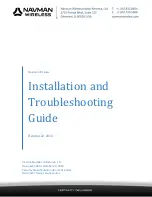
OUTPUT ADMITTANCE Ch
oe
)
The dynamic output admittance of a transistor is
the measurement of the
change
in collector current
(.6Ic) resulting from a specific
change
in collector
voltage (.6 Vo) at a constant base current. Admit
tance is measured in mhos. The "h" parameter for
output admittance in the common emitter configura
tion is stated as:
Example:
.6Ic
I4mA - l lmA _ 3mA _ .75 millimhos or
/\V
=
7V 3V
- 4V - 750 µmhos at
w
c
-
In of 150 p,A
A change in coll
ec
tor voltage normally causes
change in collector current. For some transistors, the
effect is quite apparent b
ec
ause the curves h
av
e a
noticeable slope. Such a transistor has a compara
tively high output admittance. Other transistors dis
play a near horizontal curve with a very small
change in collector current. These transistors have
a low output admittance.
Output admittance is measured from the same
family of curves as displayed for gain or beta
measurement. The measurement is taken at a con
stant base current, that is, along one of the curves
in the display. If specification data is used for refer
ence, use the base current specified. Otherwise,
select a base current curve that is typical for the
normal operating range of the transistor being tested.
The measurement is made between two specific
collector voltages. When testing per specification,
use the specified voltages. Without specifications,
select two voltages, one just above the saturation
knee of the curve and one somewhat below collector
breakdown. For measuring very small .6I
0
values,
a higher vertical gain for the oscilloscope would be
helpful, but the oscilloscope must remain calibrated.
If the oscilloscope gain can be increased in steps,
such as 10: l, without changing the fine vertical sensi
tivity setting, the use of such a setting m
ay
be
OUTPUT ADMITTANCE
20,
.............
.
1a,
...
I
:
16, ········-'.········
14, ....
Ic 10!
_ LHc
hoe - t:Nc
2,r'· ........ , ............ , ........... , ........... , ........... , ........... , ........... , ........... , ............ , ........... ,
0
o...._.....___.2 __
3_..._4_.._5_6
__ 1
___
_.a
_
_.9 __
hoe
= Ale
AVc
valuable.
vc l-1wc-l
h
oe
= 750 µmhos at
lb ol 150µA
Figure 24. Output Admittance
The transistor's output impedance (or collector
resistance) is the reciprocal of its output admittance
and is measured in ohms. It may be calculated by
transposing the current and voltage values used in
determining output admittance. The transistor pro
vides maximum power transfer if the lead impe
dance equals the transistor's output impedance.
Example:
V
Output Impedance
=
Ice
Ve 3 mA
1;- = � = 1.33 Kn
EFFECTS OF TEMPERATURE
The conduction of current through a transistor
results in heat generation. The amount of heat
increases with the value of collector voltage and
current. An excessive heat build-up will result if the
transistor cannot dissipate the heat generated. If
excessive heat is generated while testing with the
curve tracer, the results can easily be detected in
the displ
ay
.
A high temperature may produce a noticeable loop
in the curves (Figure 25A). Collector capacitance
or inductance can also cause a loop in the curves
but can be distinguished from a temperature loop.
For a temperature loop, the loop size d
ec
reases and
disappears when the base current steps or collector
voltage are reduced. The reason for the loop in the
curves is that collector current does not increase
and decrease at the same rate when the sweep
voltage is applied. As sweep voltage starts from
20
zero, the transistor is cool. As the sweep voltage
increases to maximum, a collector current sweep is
made. Meanwhile, the temperature is increasing.
The temperature increase causes an additional
amount of coll
ec
tor current. As the sweep voltage
returns to zero, the collector current decreases, but
at a lag. During the return sweep, the temperature
drops from maximum to normal, but a time lag is
required for this cooling to occur. Therefore, the
top portion of the loop is the increasing sweep
current and the bottom portion of the loop is the
decreasing sweep current.
Another effect in some transistors is that coll
ec
tor
current droops at
.
the high end of the curve. In this
case, the increase in temperature causes a decrease
in collector current (Figure 25B).
Excessive current to the extent that thermal run
away begins is observed as a "vertical roll" effect.














































